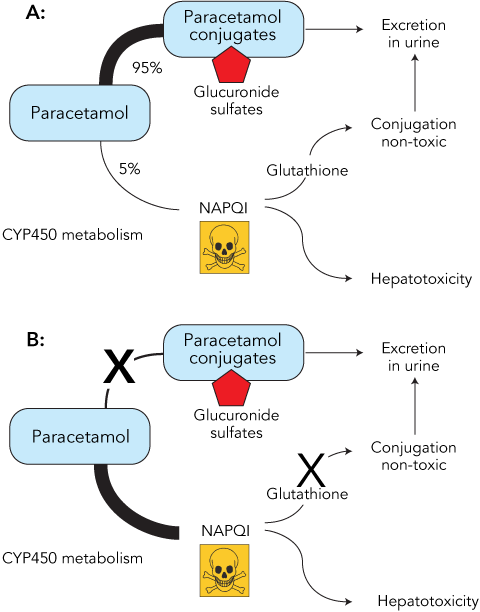

In the United States, attempted suicide accounts for more than two thirds of acetaminophen-related liver injuries, whereas accidental overdoses account for only one third of the cases.1 Although acetaminophen is exceptionally safe when taken in therapeutic doses, liver damage can occur by taking more than the recommended dose or when taken with other substances such as alcohol. The brand name Tylenol™ is derived from it's chemical name N -acetyl-p -aminophenol.

Acetaminophen is available under the brand name Tylenol™ and other trade or generic names. An analgesic-antipyretic, acetaminophen is available as a single drug or in combination with other common prescription and over-the-counter medications such as Lortab™, Anacin™ and Midol™. In this article you will learn about acetaminophen and how it can damage the liver, tests performed when there is an acetaminophen overdose, treatments commonly used in an acetaminophen overdose and the supportive care of an acetaminophen overdose patient.Īlso known by its chemical name, N -acetyl-p -aminophenol or APAP, acetaminophen became an over-the-counter medication in the 1950's. Upon arrival in the Emergency Department, approximately three hours after her overdose, Amanda was immediately started on treatments to help prevent liver damage that could lead to her death. About two hours after taking the medication Amanda got scared and informed her mother of what she had done. Sixteen-year-old Amanda had an argument with her mother and tried to commit suicide by taking a Amouthful of acetaminophen. You have just received the report on an overdose patient who will be coming from the Emergency Department to your floor. Powell, RN, MSN, Ph.D.Ībdominal pain acetaminophen death emergency department end of life liver injury overdose suicide A Mouthful of Death: Acetaminophen OverdoseĪ Mouthful of Death: Acetaminophen Overdose.


 0 kommentar(er)
0 kommentar(er)
